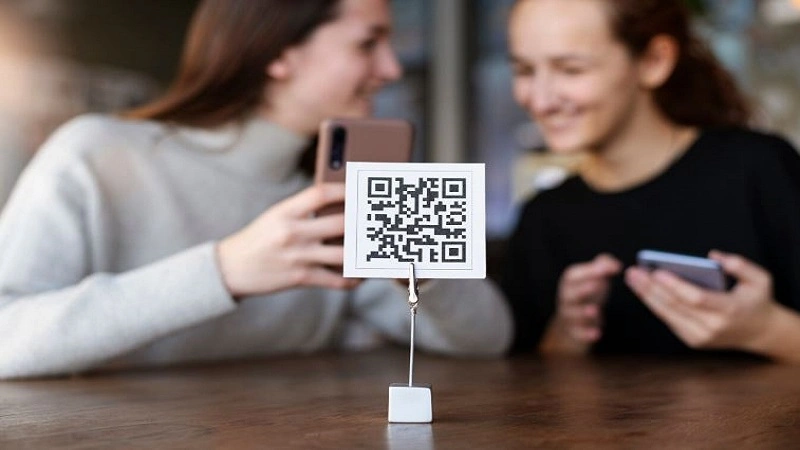
In the era of speed and speed alone, of breadth and depth in the endless digital vastness, artists and entrepreneurs are continually seeking faster and easier ways to connect with people. Enter the QR code, the small square matrix barcode that, with a swipe of a scan, opens up websites, promotions, event calendars, and more. Dull in appearance, the QR code has become a doer when it comes to getting offline locations online.
What Is a QR Code – And Why Now?
QR codes, or Quick Response codes, were introduced in the country by Denso Wave in the ’90s. A QR code is capable of holding more than just the numbers found in a UPC-A; it also contains texts, V-cards, URLs, and even a Wi-Fi network password.
“Barcodes have been around forever- why make a fuss about QR?” But the catch was that the prevalence of smartphones changed everything. Billions of camera-equipped, QR-readable devices made it second nature for most, from savvy Gen Zers to average consumers, to scan a QR code.
Five Powerful Ways to Leverage a QR Code
Optimize Marketing Campaigns
The QR code embedded on printed material-such as posters, flyers, or direct mail-takes the viewer onto your landing page, promo video, or social media sweepstakes.
Boost Product Packaging
A concealed QR code hidden in packaging materials can direct shoppers to setting instructions, technical specifications, or warranty registrations, converting an inactive box into an active brand experience.
Facilitate Contactless Payments
Acting upon mobile payment habits, link a point-of-sale QR code to mobile payment options such as Apple Pay, Google Pay, or local-specific equivalents easy and quick use.
Accelerate Event Check‑Ins
Turn tickets into a digital form with an emailed or SMSed QR code. Scanners authenticate and scan individuals in at the event – farewell, queues, and manual data entry.
Connect Beyond the Card in the Hand
Business cards with printed QR codes can send a virtual V-card (.vcf) to add you to a person’s contacts in an instant—no typos in phone numbers, no headache.
Anatomy of a Great QR Code Strategy
- Define Clear Goals
As with any marketing tool, a QR code works best when part of a established goal. Are you trying to drive email subscribers, educate users, or gather feedback? Knowing this upfront enables you to tailor the destination content appropriately.
- Choose the Right Format
QR technology is not a generic solution. Common formats are:
Static QR codes mean fixed URLs or data; fastest and cheapest.
Dynamic QR codes are trackable, editable short links that work perfectly for campaigns, A/B testing, and promotions with a limited time.
- Design with Purpose
Scan success depends on clarity. Take these design considerations into account:
Utilize high contrast (e.g., dark code on light surface).
Have an optimal size – a minimum of 2 × 2 cm (0.8 × 0.8 in).
Use your brand colors or logo to raise visibility.
Test scans on different devices and lighting environments to ensure dependability.
- Optimize the Landing Experience
The real magic begins once you’ve scanned. Your landing page must be mobile‑friendly, fast, and clean. If information is being collected (like emails for newsletter sign-ups), make the form quick and intuitive.
- Track and Refine
Utilize analytics software to track scan quantity, source (print vs. in-store), geography, and time of day. For active codes, use UTM parameters to trace back performance to your Google Analytics or marketing platform. Continual insights drive tweaks, making future QR code campaigns even more effective.
Real‑World Success: A Café’s Smooth Move
Envision a cafe in Yerevan launching a loyalty scheme. Their employees print out a QR code on every table that links to a mobile sign-up form, which frequent visitors scan using their phones, input their phone number, and receive an instant digital punchcard. Digital cardholders return 35% more frequently during the next month, redeem rewards, and share it with others, adding 50% more memberships.
Without the need for a physical kiosk or cash register interaction, the QR code rendered installation easy and kept the tone of the brand light and modern.
Avoiding Common Traps
Easily broken codes: Don’t place links behind a firewall or behind‑login content; use public URLs always.
Too much information: Only use needed data – link to a web page instead of stuffing words into the code itself.
Size issues: Tiny codes become illegible. Test at least 2 × 2 cm – and larger for far ranges.
Net illegible items: Decorative alterations can confuse scanners. Employ secure alterations like color highlights or white logo overlays.
Future of QR Code Innovation
QR code technology keeps evolving at a pace. Emerging trends include:
Smart Code integration: Dynamic codes rather than fixed destination codes, based on time, position, or user device.
AR overlays: Scan a QR code, and your phone opens up a 3D object or interactive layer – ideal for product demonstrations or virtual tours.
Multi-code experiences: Picture location-based experiences, where codes in different locations at an event trigger stages of a scavenger hunt.
Getting Started Today
Choose a reliable QR generator – some of the free ones include QRCode Monkey, QRStuff, or paid options like Beaconstac and Scanova.
Select static or dynamic depending on your needs for analytics and flexibility.
Plan for scans – visibility and contrast first.
Deploy with a clean and mobile-friendly landing page.
Change direction based on performance data and pivot in response.
In brief, putting a QR code in your offline touchpoints is one of the easiest, most effective things you can do to bring real‑world experience together with online conversion. As a low‑cost, trackable, adaptable tool, QR codes can move marketing campaigns, product utilization, and customer interaction forward without an app download.
See more whitemagz